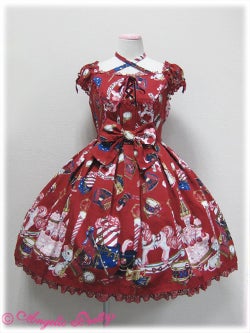I lobbied semi-viciously for this month's Bibliotheca topic of romance, with this post already drafted in the grimiest crevices of my mind. The word "Romantic" means many things to many people: obviously, love is the foremost thought in mid-February, but Romance languages might have their place as well. However, as a recovering musician, Romantic brings to mind the excesses of 19th century European and Anglo-American art music.
In Kamikaze Girls, Takemoto Novala (through the voice of Momoko) draws parallels between the excesses of the brief Rococo period and the extravagance of lolita. Momoko, as one ideal of a sweet lolita, transcends the realities of her rural life through a combination of willful ignorance and carefully crafted elegance. Drawing from visuals alone, this idea works fairly well; after all, Rococo architecture, fashion, painting, and decorative arts were all characterized by flamboyance bordering on incomprehensibility, which lolitas (especially sweet lolitas like Momoko) might relate to. But the idea of the Rococo period as the peak of excess and elegance breaks down when music is factored in.
 | |
| Mary's altar (left side altar) at the parish church Our Lady in Zedlitzdorf |
Music in the Rococo era was simpler than that of the preceding Baroque era, with smaller ensembles than the following Classical era. The sounds of the Rococo era pale in comparison to the visual media.
Instead, the era of excess for Western-trained musicians is the Romantic period, which began roughly in the 1830s and ended around the turn of the 20th century. The Romantic period brought bigger ensembles and louder sounds than before, with choirs of hundreds, entire sections of horns, and Tchaikovsky's (late Romantic) use of an actual cannon as a musical instrument (anticipating modern metal shows' pyrotechnics). Composition changed; instead of the relatively formulaic chord progressions and forms of the Classical period, Romantic pieces often implemented more key changes and less structure. The most lolita-adjacent aspect, to my mind, is the introduction of stories, especially melodramatic ones.
 |
| Berlioz's 1832 Program Notes |
Programmatic music, as exemplified by Hector Berlioz's Symphonie Fantastique, tells a story, often through accompanying writing like program notes. Symphonie Fantastique tells the sorrowful, pathetic story of the composer as he suffers from an unrequited crush and dies. This was met with great critical acclaim. Lieder were another form of music with a narrative; composers like Lizst and Schubert would either write their own depressing poetry or use poems from a famously depressing poet like Goethe, then compose the entire song, start to finish, without using a set form, purely inspired by the words.
The Romantic period of time also housed the invention of science fiction and horror as modern genres, thanks to Mary Shelley. These books began to be published as cloth-bound single volumes (instead of individual installments) towards the end of the century, creating the modern image of a book. Although the broad panniers of the 18th century were past, the quick shifts in fashion were no less impractical, while materials like weighted silk (flammable and layered with lead) and certain dyes and pigments (using arsenic and heavy metals) made clothing deadlier than ever. New technologies made luxury-look materials with jacquard-woven motifs much more accessible. Architecture took a similarly extravagant-yet-grim turn with the Gothic Revival style. And, of course, Alice's Adventures in Wonderland all began in the 1860s.
 |
| The Smithsonian Castle, a nice simple building |
All of these resonate in modern lolita, in one way or substyle of lolita.
 |
| Iron Gate OP, MMM, 2021 release, featuring Gothic Revival architecture and Romantic themes of death |
 |
| Jacquard Yoke Flared JSK, Meta, 2021, using a Jacquard fabric |
 |
| Holy Night Story OP, AP, 2010, which features the story of the 1892 Nutcracker ballet by Tchaikovsky |
Every aspect of the Romantic period has its reflection in lolita somewhere; however, I think one of the most important (and intangible) aspects of both Romantic music and lolita coordination is storytelling. Lolita dresses all have their embedded storylines, from the simplest Innocent World OP that calls to mind a studious librarian, to dresses from BTSSB and AP that reenact popular children's stories, to the pastoral serenity of a gingham dress from Metamorphose. Unlike the undirected elegance of the Rococo era, wherein ornaments existed for their own sake, each detail of a lolita dress exists to either enhance the story or the provide aesthetic balance. When I wear lolita, I exist as a truer Romantic than I ever am; I live in flights of gloomy fancy.
The Romantic period was awful in many ways: it was racist, sexist, and dangerous. I'm not saying that we return to the past at all. There's always something to be learned, though, in questioning just how we got here. I don't want to go back in time, but this Valentine's Day, I might just get a little Romantic.

No comments:
Post a Comment